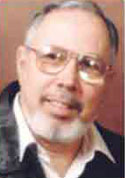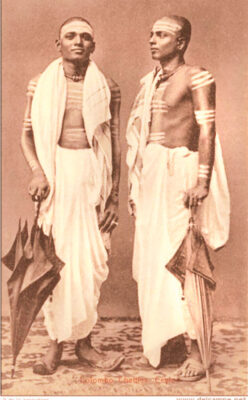COLOMBO-CHETTY BUGGERS – by Des Kelly
Quite apart from the Burghers, who still bear the same fond “alias”, the introduction by Maxwell Gerreyn, of the C.C.B.
need absolutely no enhancement at all, so, as far as I am concerned, lets get on with it, and give our e’Lanka’s special members/readers, far & wide, a most interesting account of this very minute, yet important minority of Ceylon, then, Sri Lanka, now. Let me just take the chance, as a Burgher Bugger, to wish all the Colombo-Chetty Buggers, only the very best for the New Year of 2022. We do love them, especially when I remember that it was those buggers we always went to, during the “good old days”, when we needed a loan. My friends, please read on, and “thank you” again, Maxie.

Desmond Kelly.
(Editor-in-Chief) e’Lanka.
BRIGHT STARS OF COLOMBO CHETTY COMMUNITY by ECB Wijesinghe

source: Island
I am beholden to my friend, Mervyn Casie Chetty, lawyer, poet, wit and reigning king of the Colombo Chetty community, for the fund of information he gave about Dr. Philip Sebastian Brito, one of the medical giants of a bygone era. His portrait showing a massive head, broad shoulders and sparkling eyes still adorns the walls of the Medical College.
The Brito family was famous even at the turn of this century and double-barrelled names like Brito-Muttunayagam and Brito-Babapulle testify to their pride in a distinguished ancestry. Old Dr. Brito-Babapulle’s name was a household word in Grandpas. Besides being a good doctor he was a humorist and even compiled a book of jokes. He paid the penalty for his reputation for making witty speeches by being invited to speak at every important public dinner and festive occasion.
Ultimately his digestion was affected and he went through life with a chronic gastric complaint. Which of course, was no joke. When I married, Dr. Babapulle gave us a wall-clock as a wedding present. One day when I was not feeling too well the clock stopped mysteriously and I thought my end had come. But to my dismay I soon learned that the dear old doctor had passed away instead. If he had known of my apprehensions I am certain he would have had a long, last laugh. Dr. Babapulle is no more, but the clock is still ticking.
Mervyn Casie Chetty is wrong when he says that it is mainly medical blood that runs through the Brito family. I was in school with the last of Dr. P.S. Brito’s sons, who rejoiced in the name of Andrew Theophilus Philip Gurunather Brito. His teachers called him Andrew. His mother called him Theo and his intimate friends liked to call him Gurunather.
Gurunather is an attorney-at-law now practising in Jaffna, but is better known as an astronomer of the first magnitude. Do not be surprised if, one of these days more lustre is added to a famous name by Gurunather, who spends half the night gazing at the stars. One may yet look forward to some celestial object swimming into his ken which, willy-nilly will have to be called Brito’s Comet. When that happens the Brito name will be immortal and the Casie Chettys, Savundranayagams, Aserappas, Ondaatjies, Muttukumarus, Chittys, Perumals,Anandappas, Fernandopulles, Candappas, Alleses, Pullenayagams, Christie-Davids, Rozairos, Rodrigopulles, Murugupulles and all the other collaterals will be able to bask in the reflected glory.
The Colombo Chetty community, incidentally, is an ancient tribe that migrated to this country from South India. They should not be confused with the Natukottai Chettiars, who are mainly money-lenders. One community is as different from the other as chalk is from Dutch Edam cheese. Legend has it that one of the three kings from the Orient who went to worship Christ in Bethlehem was a Colombo Chetty. His name, I believe was Casper. Though Herod wanted him to come up and see him some time after the Bethlehem visit, Casper, being a Wise Man, took a devious route and landed in Sri Lanka, where he lived happily ever afterwards.
It is not correct to say that the Caspersz family in Ceylon has anything to do with Wise Man Casper’s connections with our lovely land. In Kotahena where I spent my boyhood years, it is well known that you cannot throw a stone without hitting a couple of Colombo Chetties. As a clan they are easy-going and are fond of food and music, to say nothing of a little alcohol. Their choir at New Chetty Street compares favourably with any of the philharmonic varieties. Most of them bear Tamil names, but by nature they have greater affinities with the Sinhalese. They celebrate the feasts of St. Anne at Wattala and Welisara with greater eclat than Christmas. The mortality among the porcine population is heavy during these festivals, as they believe in the popular theory that fatty foods are easily digested when they are washed down with large quantities of what they affectionately call “Old Stuff.”
Many Colombo Chetty celebrities have surfaced during the past 200 years. Perhaps the greatest of them was Simon Casie Chetty, the great-grandfather of Mervyn. Simon, however, made two mistakes. One of them was to be born in Calpentyn, where there were no maha vidyalayas at the time. Undeterred by this handicap – or was it? – he educated himself, and, besides mastering four languages, achieved fame as a lawyer judge and historian. And all within a brief life span of some 50 years.
Simon’s other major mistake was to start a newspaper. It was in Tamil and probably the first in that language. But it folded up as most of the best newspapers do, not owing to lack of readers, but due to amnesia on the part of subscribers, who forgot to pay their subscriptions. The history of journalism is studded with such lapses of memory.
Before Simon Casie Chetty’s star began to shine in Colombo there was a Colombo Chetty named Jurgen Ondaatjie who emigrated to Holland and became an instant favourite with the Dutch ladies. Ondaatjie’s virile personality and glib tongue appealed to the phlegmatic dames from Amsterdam to the Utrecht. They immediately took him to their bosoms and tip-toed through the tulips with Jurgen. They liked not only the tan on his face but the tang of his name, which sounded so Dutch that they persuaded their reluctant husbands to give him a high Government post, in fact a four-poster, from where Jurgen Ondaatjie disseminated Oriental culture and added a touch of colour to the sallow complexions of the Netherlands natives.
I had the good fortune to work alongside one of his descendants, a journalist named B.R.J Ondaatjie, the fastest shorthand writer of the day, with probably one exception, Stanley Morrison. He was possessed of a sharp tongue and it was a treat to hear him after one of those confrontations with his boss, D.R.Wijewardene. It was then that he expended his ire on his colleagues, a thing he could not do to D.R.W.
Other Colombo Chetties who made good abroad were the de Mello Aserappas, who rose to the top wherever they went, but the man who really put Ceylon on the map was Emil Savundranayagam. He made a long name short by calling himself Dr. Emil Savundra. If the term “genius” can be applied to any living Ceylonese it is to Emil. Before he was 35 he had acquired an international reputation as a financial wizard. From China to Peru hard-boiled entrepreneurs were dazzled, if not by his virtue, at least by his virtuosity.
Emil made them look like the rabbits which he pulled out of his capacious bag of tricks. Emil was the only Ceylonese to own a luxurious sea-going yacht though owing to recent vicissitudes he has had to give it up and paddle his own canoe. But he is bound to set sail in his yacht once more. You cannot keep a clever man grounded for long.
FOOTNOTE TO HISTORY
My learned friend and kinsman, Stanley Suraweera, the Lion of the Kegalla Bar, has taken my light-hearted romp into the past somewhat seriously and kindly sent me some more details of the famous Colombo Chetty who emigrated over 200 years ago and made good. The point that Stanley wishes to make is that Quint Ondaatje was not only a greater man than Simon Casie Chetty or Dr. P.S. Brito but that he was the greatest Ceylonese of all time. And that of course, includes not only our dear old kings but coming closer to our own generation, men like Dr. Ananda Coomaraswamy, Charles Ambrose Lorenz, Sir Harry Dias, Arunachalam, Ramanathan, D.S. Senanayake, Dudley and S.W.R.D. Bandaranaike.
This statement should raise a hornets’ nest if I knew anything of the idiosyncrasies of these troublesome insects. I do not pretend to be a historian and the little bit of history I crammed for my Cambridge Senior was forgotten immediately after the examination. Nor do I wish to probe too deeply into the cupboards of ancient families because the rattle of skeletons can sometimes be most annoying. Anyhow, this is what Stanley Suraweera writes, and I am giving it headings and all, for the edification of my less-informed readers:
THOSE ONDAATJES
Your reference to the third generation Ondaatje, better known as Quint Ondaatje, in this column, recalls to me this paragraph in Cassell’s Biographical Dictionary – Ondaatje Peter Philip Jurgen Quint, Phd and JUD born Ceylon 1758, died Java 1818. Remarkable as the only Asiatic who figured in European history. He was an orator, writer, politician, lawyer and soldier, but par excellence, a patriot and champion of liberty.
In later years, he was Quartermaster-General under the great Napoleon Bonaparte. Early in life he collected, not only a Master’s degree in Arts at the University of Utrecht, Holland, but also Doctorates in Philosophy and the literal sciences. In February, 1783 he received the honour of the Freedom of the City of Utrecht. He also took to Dutch politics. In the year 1806, Quint was nominated as Councillor of the Court of Finance of the Batavian Republic and towards the end of that same year appointed resident of the Council of Imports and Prices in the Kingdom of Holland, under Louis Bonaparte. By February 1815 he was by royal mandate, included among the Civil Servants of the First Class, destined for the East Indies Service. On April 30, 1818, he was dead.
And in the words of his biographer Mrs. C.M. Davies, the wife whom he had loved so long and so well, sank from a state of perfect health into the grave, a few months after him.
(Excerpted from THE GOOD AT THEIR BEST first published in 1976)







